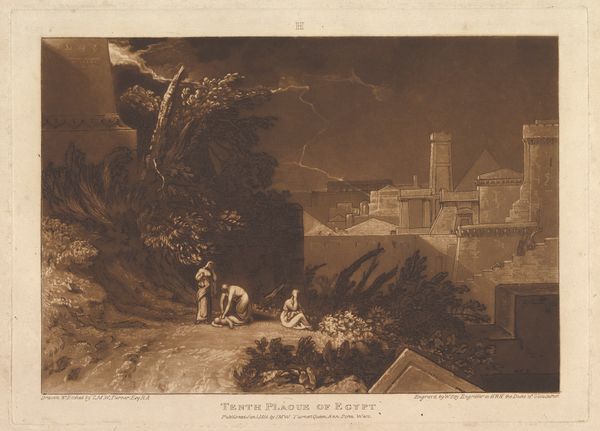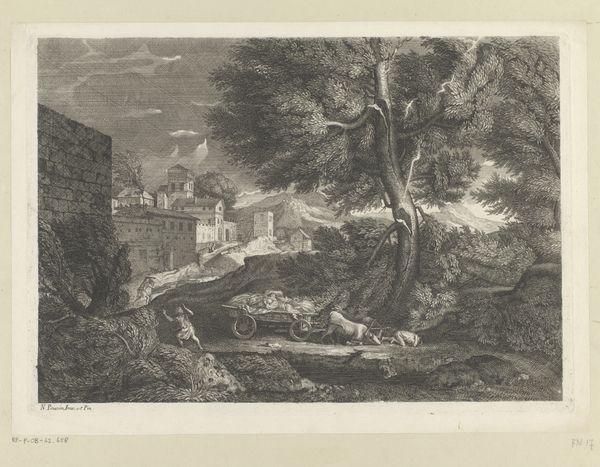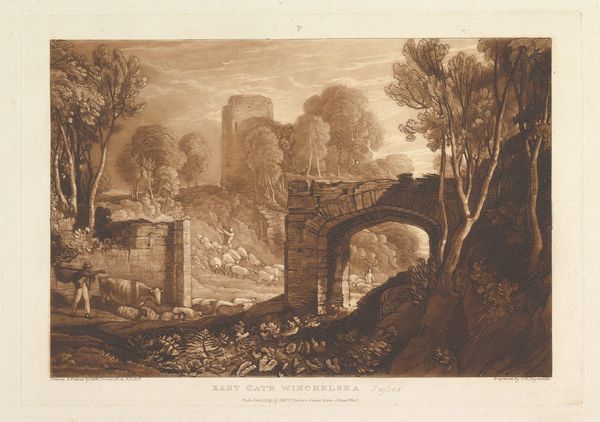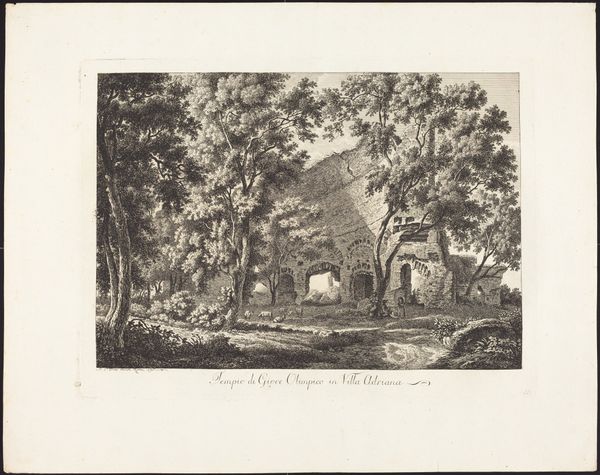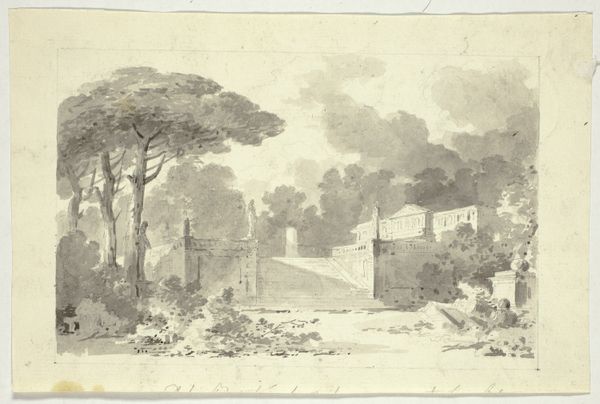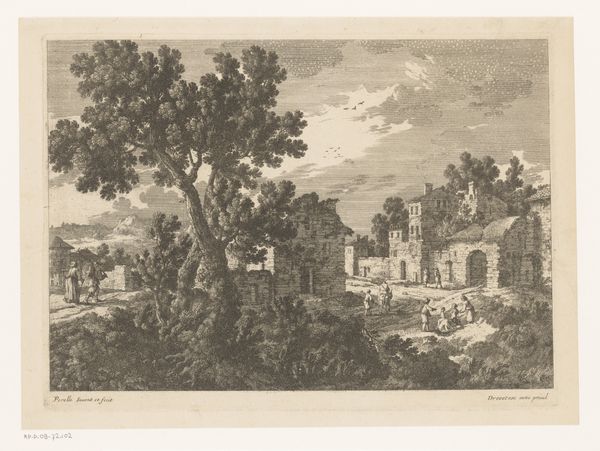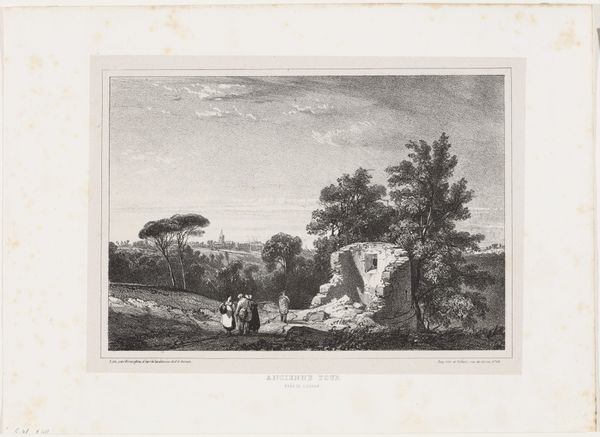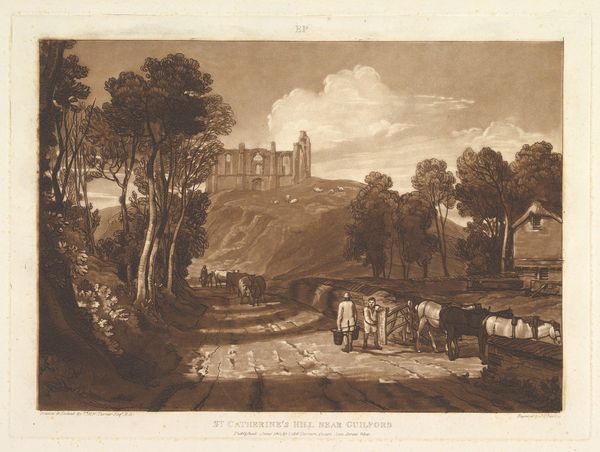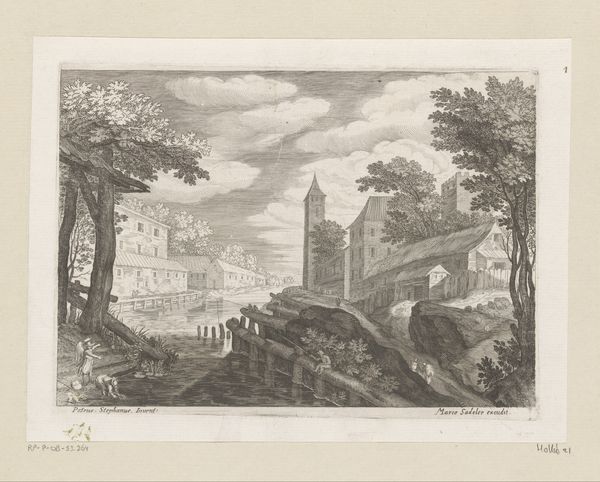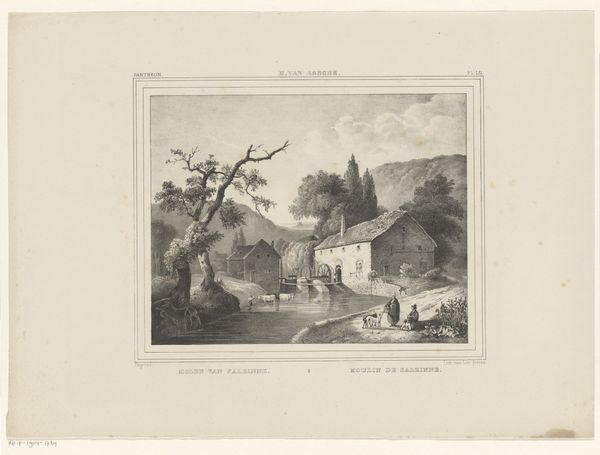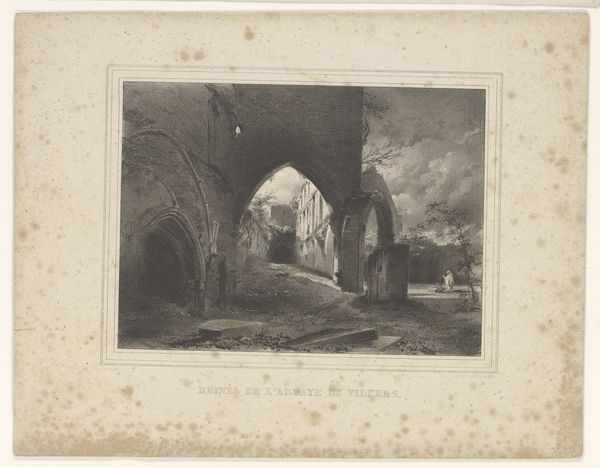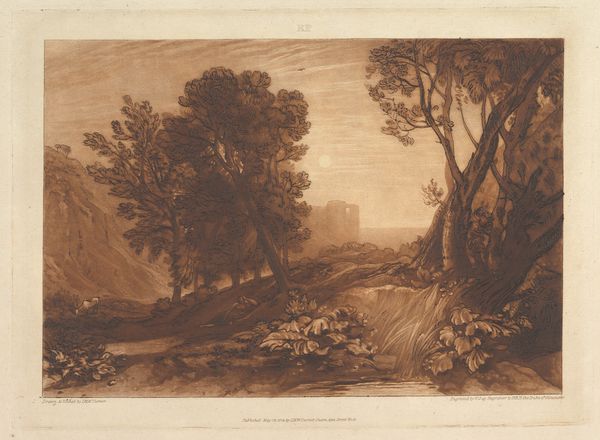
Christ and the Woman of Samaria (Liber Studiorum, part XIV, plate 71) 1819
0:00
0:00
drawing, print, etching
#
tree
#
drawing
# print
#
etching
#
landscape
#
charcoal drawing
#
figuration
#
road
#
romanticism
#
men
#
line
#
history-painting
Dimensions: plate: 7 1/4 x 10 3/8 in. (18.4 x 26.4 cm) sheet: 8 1/4 x 11 7/16 in. (21 x 29.1 cm)
Copyright: Public Domain
Curator: The sepia tones lend a certain tranquility to this etching. I'm immediately struck by its gentle and somewhat melancholy atmosphere. Editor: Indeed. This is Joseph Mallord William Turner's "Christ and the Woman of Samaria" from his "Liber Studiorum" series, published in 1819. As a print, specifically an etching, it allows us to think about how images and narratives are circulated, and the labor involved in mass production versus the singular art object. Curator: What I find compelling is how Turner combines classical and biblical themes. We have the figure of Christ in a very natural setting, juxtaposed with what appears to be Roman ruins. There’s a dialog between historical narratives happening in the image. How did the institutional reception of the image play a role in cementing it within broader artistic conventions? Editor: The 'Liber Studiorum' was consciously styled as a response to Claude Lorrain's 'Liber Veritatis,' placing Turner in dialogue with the masters. Crucially, the very concept of an 'archive' and 'collection' played into his project. By reproducing and distributing images, he engaged with the expanding art market of his time. And in that expansion, of course, come questions of access, ownership, and the economics of artistic dissemination. How do different audiences, viewing spaces, and economic dynamics affect the meaning imbued to these images? Curator: Yes, consider the material constraints he was operating under. Etching is hardly the most immediate medium. Its reliance on acids and metal plates reflects a different type of labor compared to, say, impasto painting. The printmaking techniques afforded both opportunities and limitations within his larger artistic enterprise. The choice of materials significantly shaped the outcome. Editor: A point well taken! "Christ and the Woman of Samaria" becomes a vehicle to disseminate Turner's style and vision widely but the subject is fraught. As the biblical scene becomes another element to exploit to place himself in art historical dialogs, we must be critical of how the message could be impacted. I see a layering of narratives and mediums operating in harmony—history as construction. Curator: Considering both the landscape and figures rendered, there's this tension of man in nature that I’ve never noticed so keenly as now. The ruin also offers another facet into consumption that is quite resonant in the image. Editor: Well, it certainly sheds new light on our contemporary obsessions and its impact in 19th century romanticism, doesn’t it? Thank you for your perspective.
Comments
No comments
Be the first to comment and join the conversation on the ultimate creative platform.
